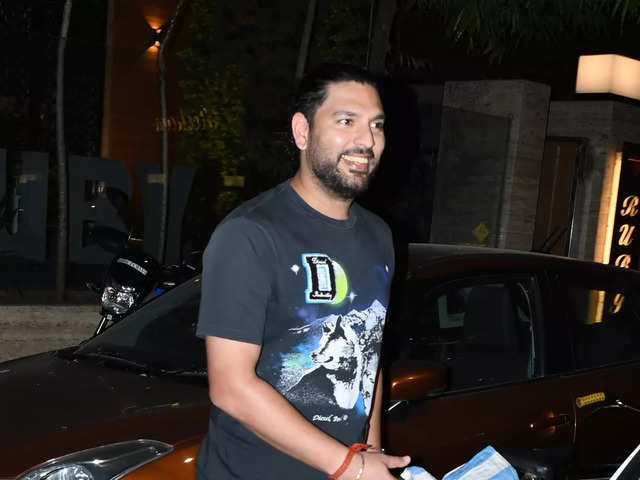
Signify to make 80% of its revenue from sustainable products in 2020Signify
Signify aims to become an intelligent software company that offers lighting solutions designed for the IoT world. It i...
Nov 20, 2019, 11:57 IST
brands
Signify to make 80% of its revenue from sustainable products in 2020; will continue investing 55% of its marketing monnies on TV
Nov 20, 2019, 11:57 IST
Signify aims to become an intelligent software company that offers lighting solutions designed for the IoT world. It i...
- In Q3, Signify was 64% carbon neutral and 79% of its revenue came from sustainable products. It will be executing the same programs to reduce its carbon footprint in India to drive sustainable revenues.
- On the other hand, the brand also aims to become an intelligent software company that offers lighting solutions designed for the IoT world. It invests 4.5% of its global budget on R&D and its latest bet is LiFi.
- Signify currently spends only 5% on digital and 55% of its overall marketing spends on TV, here is why...
‘Lighting can now make every home smarter, cities safer and offices more energy efficient’ and Signify aims to drive this change across the world. Currently, the Indian lighting industry is worth Rs 15,000 crore with LED lighting constituting almost 80% of this.
Last year, Signify invested 4.5% of its global sales on Research and Development (R&D) and its latest innovative bet is on Light Fidelity (LiFi), a technology in which high quality LED lighting provides a stable and fast broadband Internet connection through light waves. The company has installed 7 LiFi pilot stations in India across different segments and on the other hand, it also aiming to gain 80% of its revenues from sustainable products.
While the company is focusing more on innovation and technology, it continues to spend 55% of its marketing monnies on television and only 5% goes to digital.
Sumit Padmakar Joshi, Vice Chairman and Managing Director,
Excerpts:
Q. What have some of the key highlights of your journey with the brand been?
One of the key highlights of my journey here has been the transformation of the company from a bulb manufacturer to a software company, now offering lighting solutions designed for the IoT world. Our new company name – Signify reflects our company’s purpose – the meaning of light. Light is now a language and can be used to transmit data via LiFi or communicate with other devices via the IoT. Moving away from a pure hardware manufacturer, we have transformed into a company that offers not just lighting but also important business insights and data that can help our customers become smarter and more productive. Leading the company through this phase has been an exciting journey so far.
Q. Why did the brand change its name from Philips to Signify, considering Philips is a household name in India?
Founded as Philips in Eindhoven, the Netherlands, we’ve led the lighting industry with innovations that serve professional and consumer markets for over 127 years. In 2016, we spun off from Philips, becoming a separate company, listed on Amsterdam’s Euronext Stock Exchange.
The renaming of our company was the next logical step in our transformation journey since we became a standalone company in 2016. We changed our company name in line with contractual requirements of the Company Name License agreement with Royal Philips, which requires that we change our company name after Royal Philips, who no longer has a controlling interest.
Signify will continue to use the Philips brand for its products, under the existing licensing agreement with Royal Philips. The choice of our new company name originates from the way light has become an intelligent language, which connects and conveys meaning. It’s a clear expression of our strategic vision and purpose to unlock the extraordinary potential of light for brighter lives and a better world. We believe that our new name will further shape our company’s profile as both the world leader in lighting and the lighting company for the Internet of Things.
Q. We have seen advanced technology and innovations at Signify now, where did Signify source that new technology?
We invest heavily in R&D to stay at the forefront of technological developments. In 2018, we invested 4.5% of our global sales in R&D. We spot an opportunity which nobody focuses on and grow in that segment by coming up with futuristic solutions.
As a leader in lighting, we innovate, design, build, and deliver world-class lighting systems embedded with intelligence and connected through software to deliver capability to manage, monitor and control lighting assets, enable data harvesting and analysis for improvement of lighting operation and business performance. We are positioning ourselves as the lighting company for the Internet of Things.
We recently announced the launch of our Interact IoT platform for connected lighting, which will enable our professional customers to unlock the full potential of their connected lighting assets. The platform delivers new insights to help customers drive operational efficiencies and take more effective decisions. It also supports our company’s strategy to deliver new data-enabled services as value expands from lighting products and systems to services.
Q. Talking about innovations, are you seeing LiFi changing the game in India? How has the response been so far?
Light Fidelity (LiFi) is a technology in which high quality LED lighting provides a stable and fast broadband Internet connection through light waves. Unlike other forms of wireless communications (WiFi, 4G/5G, Bluetooth, etc.) that use radio waves, LiFi uses the broader spectrum of light waves to transmit and receive data wirelessly. LiFi’s bandwidth is more than 1,000 times the size of the radio spectrum. LiFi works in such a way that each luminaire is equipped with a built-in modem that modulates light at speeds imperceptible to the human eye. The light is detected by a USB access key/dongle plugged into the socket of a laptop or tablet (in the future such technology will be inbuilt into laptops, mobile phones, and devices). The USB access key returns data to the luminaire through an infrared link.
While radio frequencies are becoming congested, with more devices trying to connect and overloading networks, the visible light spectrum is an untapped resource with a large bandwidth suitable for stable simultaneous connection for a vast array of Internet of Things devices.
With our efforts and constant drive for LiFi in the market, we already have 7 pilot installations in India across different segments, including banks, Information technology, Co-Working spaces, B2G, Infrastructure amongst others. We were also specially invited by the Prime Minister’s Office (PMO) and Government of Gujarat to showcase LiFi as a Futuristic Technology at the Vibrant Gujarat summit which received a footfall of 25,000 delegates, including Central and State Ministers, several corporate houses and government officials.
Q. Globally, Signify has been talking about becoming Carbon-neutral. How successful have you been so far? What exactly are you doing in India to become Carbon-neutral?
We are taking a leading role to bring better light to the world and to help provide a more sustainable future. We do this by delivering light which is energy efficient, saves resources, and improves lives. At Signify, we also ‘walk the talk’ and commit to becoming carbon neutral by 2020. We are already carbon neutral in 9 markets as of 2019. We have made some bold promises that we’ll deliver on by 2020. 80% of our revenues will be sustainable and we’ll also deliver 2 billion LED lamps and luminaires to the world. As of Q3, 2019, we are 64% carbon neutral and already 79% of our revenues come from sustainable products. 89% of our purchased electricity comes from renewable sources and we are recycling 82% of our manufacturing waste. We are executing the same programs to reduce our carbon footprint in India as well, including driving sustainable revenues, zero waste to landfill, striving for a zero-injury workplace, and building a sustainable supply chain.
Q. With your brand repositioning and new brand endorsers, we have seen your focus shifting to smart lighting. What part of revenue do you make from that category now? Which category brings the lion’s share home?
In India, smart lighting for homes is a Rs 100 crores+ category and is expected to grow by 45% over the next 3 years as many more houses adopt connected lighting in a major way. We are by far the market leader in this segment as well, as we virtually created this category when we launched our Philips Hue range in India 4 years back. While smart lighting constitutes a very small share of our overall business right now, it has a lot of potential for growth in the future owing to increasing urbanization and internet penetration. Ultimately our focus is on new homes and renovations, where we see a lot of consumers trying out connected lighting for the first time. The biggest categories for our company are LED lighting in both professional and consumer applications. We recently introduced a range of new products for the consumer segment, including our Philips T Beamer, Philips CeilingSecure and Philips EyePro Bulb. For our professional users, we recently introduced lighting solutions such as Interact and LiFi.
Q. How has the year been, in terms of business?
We witnessed high single digit growth in the first half of this calendar year, and expect growth to be ‘slightly muted’ during the remaining half of this year due to overall economic slowdown in the country. In Q2 we saw some projects getting delayed due to elections in the country, however, we were expecting a recovery but it looks like it is getting slightly delayed. It will take another three-to-six months for things to start picking up in the Indian lighting sector. The current economic slowdown has impacted industries across sectors in India and we are no different.
Q. People in rural areas are still not ready to accept LEDs in their lives because of high costs. What are you doing to bring down the cost of your products?
Government electrification schemes like Suabhagya are helping even remote towns and villages to have access to electricity. Moreover, with rising rural incomes and penetration of media, aspirations and awareness about new products amongst rural households has increased over the past few years.
While rural households still use conventional lighting in a big way, we’re witnessing a steady and growing demand for LEDs from these areas as well, owing to its reduced prices and enhanced awareness about its advantages, such as high durability and lower power consumption.
We have launched an LED range of products, Philips Ujjwal, to cater to this audience, offering a better price value suited to their budget. The technical specifications of these products have been specially designed keeping in mind rural lighting requirements and preferences.
Q. Can you walk us through your larger marketing strategy for the brand?
India is amongst the top 5 markets for Signify globally and we invest a lot in marketing to support our brand and activities. Our spends on TV Advertising in India are by far the highest across all Signify markets, keeping in mind that India has traditionally been a TV-advertising-focused market. 55% of our overall marketing spends in India are towards TV advertising to reach out to our target audience. Our TV advertising in India is biased towards promoting our new product categories like TBulb, Ceiling Secure. In the last two years, we have launched 2 major TV ad campaigns for these two products.
5% of our overall marketing spends are on digital marketing in India, whereas the lighting category’s digital spends in India stand at 3-4%. Majority of our digital marketing spends are towards SEM and lead generation, highlighting our IoT products like Interact, LiFi and Philips Hue. 26% of our overall marketing spends in India are directed towards creating brand awareness and preference.
Q. What areas will you focus on going ahead, to amplify growth?
The overall market size of the Indian lighting industry is Rs 15,000 crore with LED lighting constituting almost 80% of this. The LED portion of the industry is expected to grow in high single digits. The conventional lighting market is, however, expected to decline in double digits, owing to faster conversion towards LED. It is not possible for companies to deliver on their top-line as well as bottom-line costs without category-first innovations. As a result, we don’t see many companies in India being able to manage that equation successfully. We’ve managed to increase our profitability over the last 3-4 years, thanks to new innovative products like Philips T Beamer, Philips EYE PRO and Philips Smart WiFi LED bulb. We will also focus on expanding our presence in the rural channel with our customized offerings.
Our focus is on innovation and expanding the premium segment where nobody focuses on right now. We believe that companies that don’t innovate, that are entering the lighting industry from other backgrounds are going to have a difficult time surviving in this market. However, if the government continues to allow cheap and sub-standard products to be sold in the market, we foresee that it will become a big roadblock for the industry, which can further impact the price point for the whole industry. We are also investing significantly to grow our smart home lighting business in both offline and online channels, through our exclusive Philips Smart Light Hubs and with our presence on all major e-commerce portals. By the end of the year, we expect to double our retail presence for smart lighting in the country with new Philips Smart Light Hubs opening across various cities. In the professional lighting space, we will strive to grow our Interact connected lighting installations in offices, public buildings, retail stores, hotels and landmarks. Signify has already installed 53 million connected light points worldwide and plans for every new LED product it produces to be connectable by 2020. The highly secure, scalable cloud-based Interact platform uses sophisticated and modern data management and data processing capabilities, including machine learning, to bring sense to all manner of data – creating data-enabled services for customers that will deliver benefits beyond illumination. In the coming year, we will focus on new LiFi installations, trying to expand to new user applications. There is a lot of potential for LiFi in India, with millions of internet devices being added into the connected ecosystem every day.
INSIDER INTELLIGENCE REPORTS







